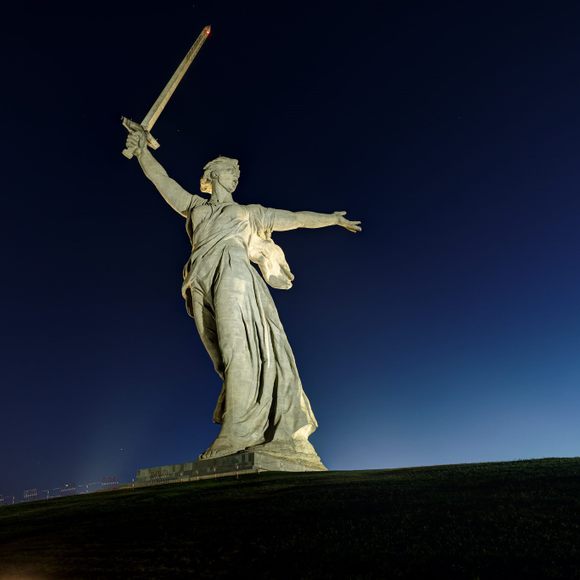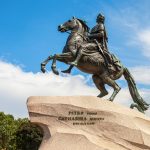In the pantheon of iconic Russian sculptures, few are as striking and poignant as “The Motherland Calls.” Perched atop the Mamayev Kurgan memorial complex in Volgograd, formerly known as Stalingrad, this monumental statue stands as a towering tribute to the courage, sacrifice, and resilience of the Soviet Union during World War II. In this article, we delve into the history, symbolism, and cultural significance of “The Motherland Calls,” exploring its enduring legacy as a symbol of hope, remembrance, and national pride.
The History of “The Motherland Calls”:
Commissioned in the aftermath of the Battle of Stalingrad, one of the most decisive and brutal battles of World War II, “The Motherland Calls” was conceived as a memorial to honor the sacrifices of the Soviet soldiers who fought and died defending their homeland against Nazi aggression. The idea for the monument emerged during the war’s darkest days, as the city of Stalingrad lay besieged and in ruins, its streets littered with the debris of battle and the bodies of the fallen.
Designed by sculptor Yevgeny Vuchetich and engineer Nikolai Nikitin, “The Motherland Calls” was envisioned as a towering symbol of defiance and victory, a testament to the indomitable spirit of the Soviet people in the face of adversity. Construction of the statue began in 1959 and took six years to complete, with thousands of workers laboring tirelessly to bring Vuchetich’s vision to life.
Symbolism and Meaning:
“The Motherland Calls” is a masterpiece of Soviet sculpture, rich in symbolism and imbued with profound meaning. At its core, the statue represents the triumph of the human spirit over tyranny and oppression, embodied by the figure of a sword-wielding woman urging her compatriots to defend their homeland against the forces of fascism.
The statue’s colossal size and dynamic composition convey a sense of strength, resolve, and determination, reflecting the Soviet Union’s commitment to victory at any cost. Standing at an impressive height of 85 meters, “The Motherland Calls” is one of the tallest statues in the world, its outstretched arm reaching towards the sky as if to summon the courage and fortitude of the Soviet people.
The placement of the statue atop the Mamayev Kurgan, a strategic hill overlooking the city of Volgograd, holds further significance. It is said that Vuchetich chose this location to symbolize the pivotal role of the Soviet soldiers in turning the tide of the war and securing victory for the Allied forces. From its vantage point, “The Motherland Calls” watches over the city like a guardian angel, a silent sentinel standing watch over the sacred ground where so many gave their lives in defense of freedom and justice.
Cultural Impact and Legacy:
“The Motherland Calls” has left an indelible mark on Russian culture and history, serving as a potent symbol of national pride, remembrance, and heroism. For generations of Russians, the statue is a source of inspiration and reverence, a reminder of the sacrifices made by their forebears to secure a better future for generations to come.
The statue’s enduring legacy extends far beyond its physical presence, permeating Russian art, literature, and popular culture. It has been immortalized in countless poems, songs, and works of fiction, each paying tribute to the bravery and resilience of the Soviet soldiers who fought and died in the defense of their homeland.
Conclusion:”The Motherland Calls” stands as a testament to the enduring power of art to capture the essence of a nation and its people. With its majestic beauty, profound symbolism, and rich cultural legacy, the statue continues to inspire awe and reverence in all who behold it. As a tribute to the courage and sacrifice of the Soviet soldiers and a symbol of hope and resilience in the face of adversity, “The Motherland Calls” holds a special place in the hearts of Russians and remains one of the most iconic and cherished sculptures in the world.



